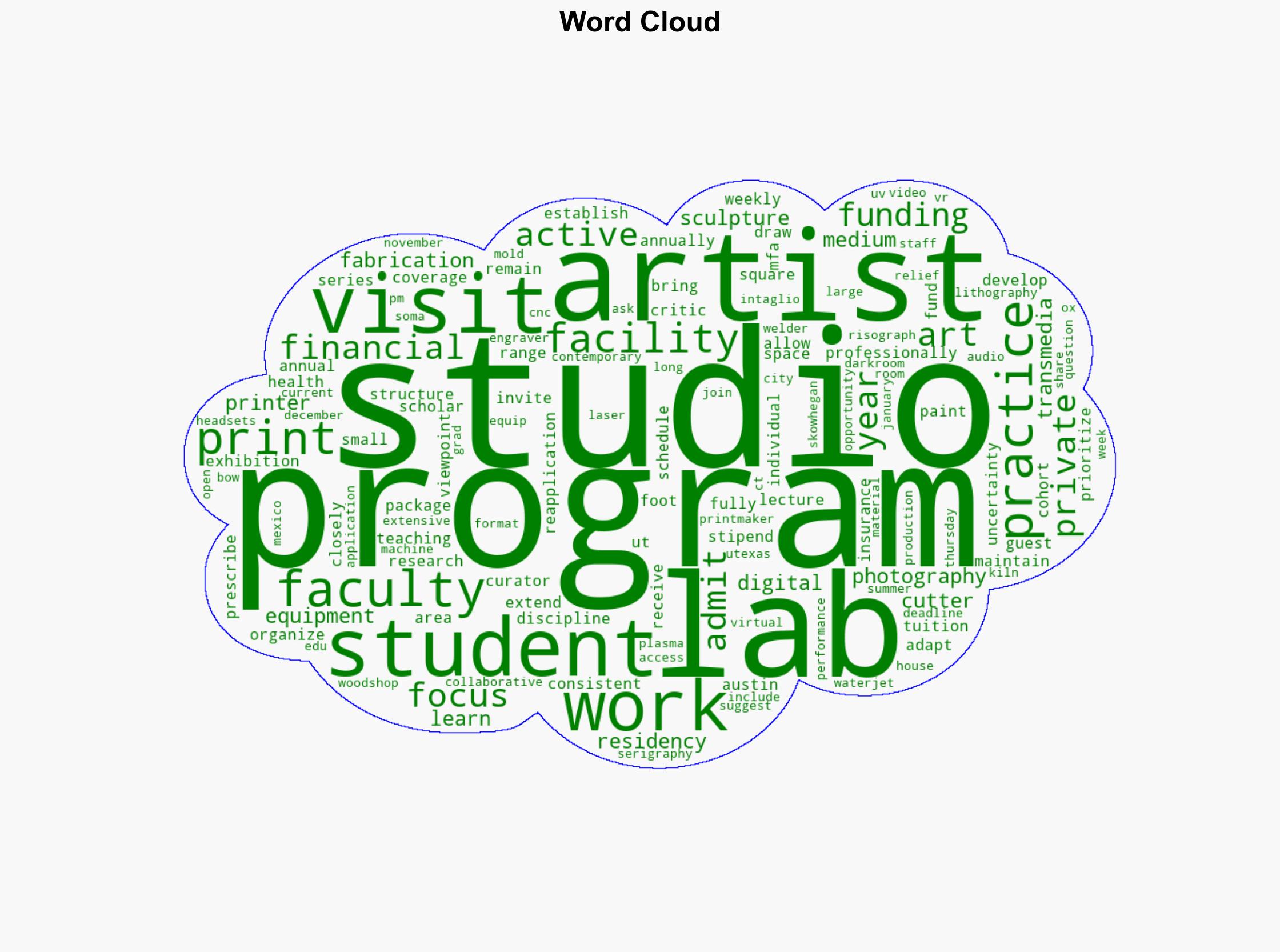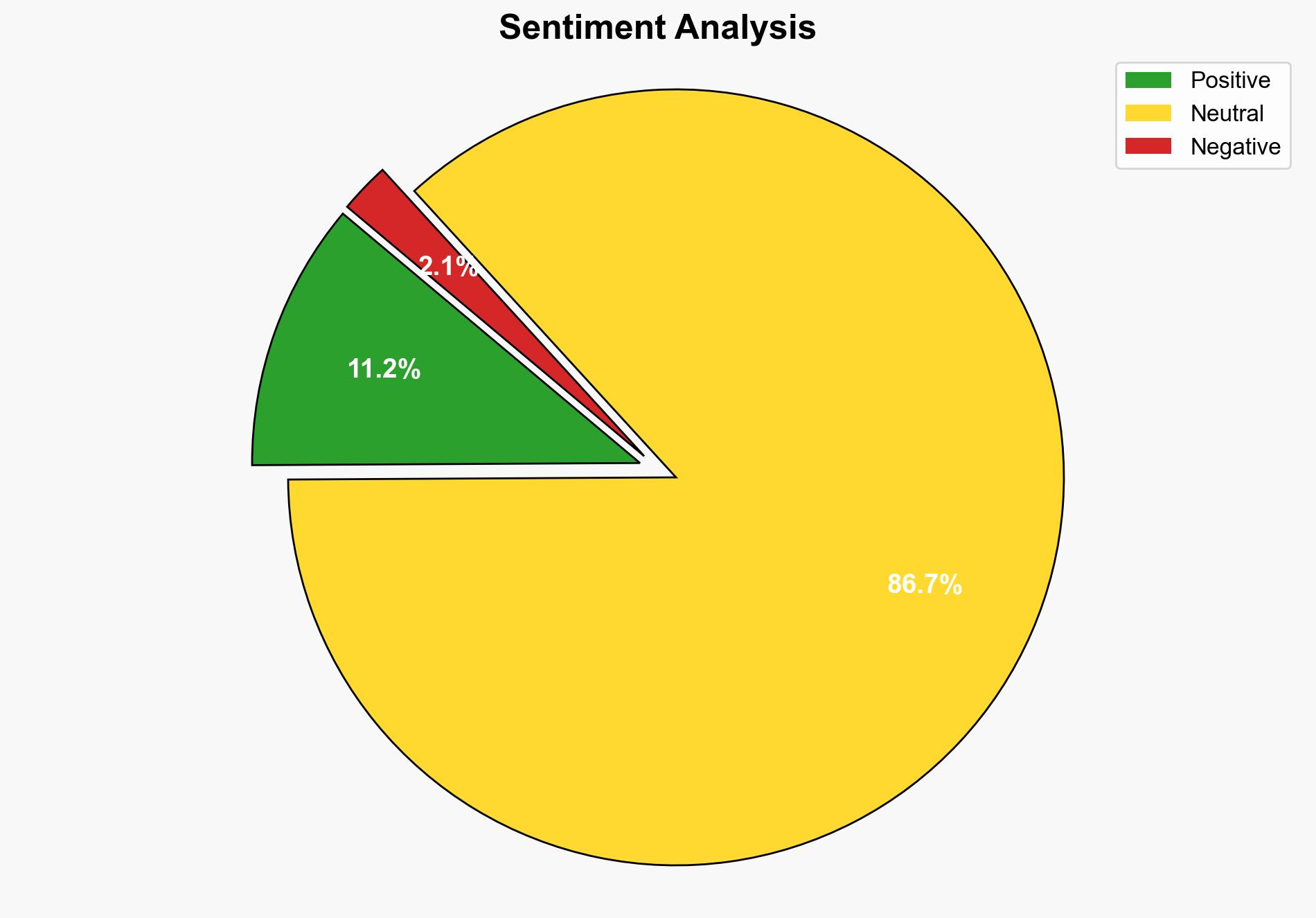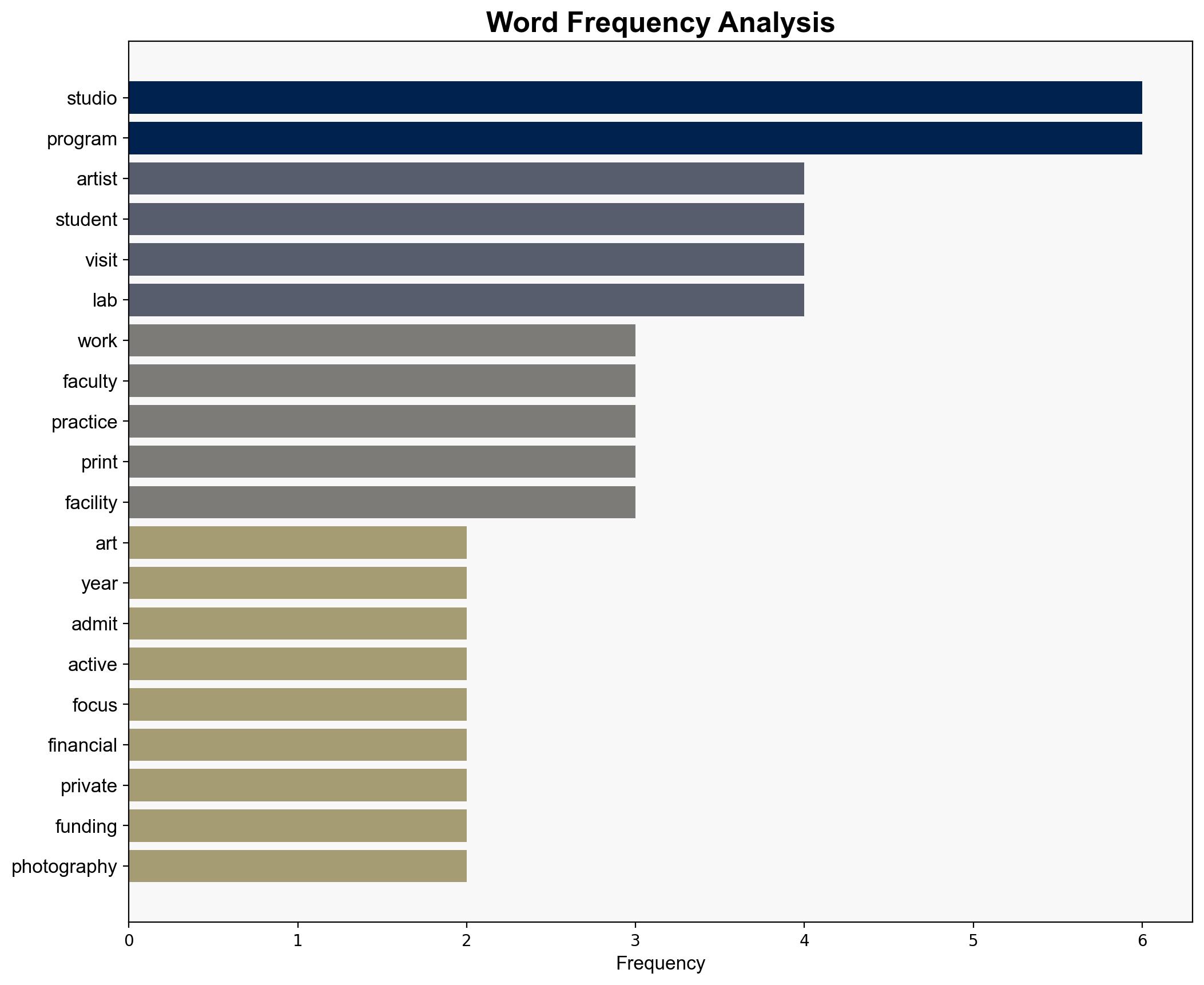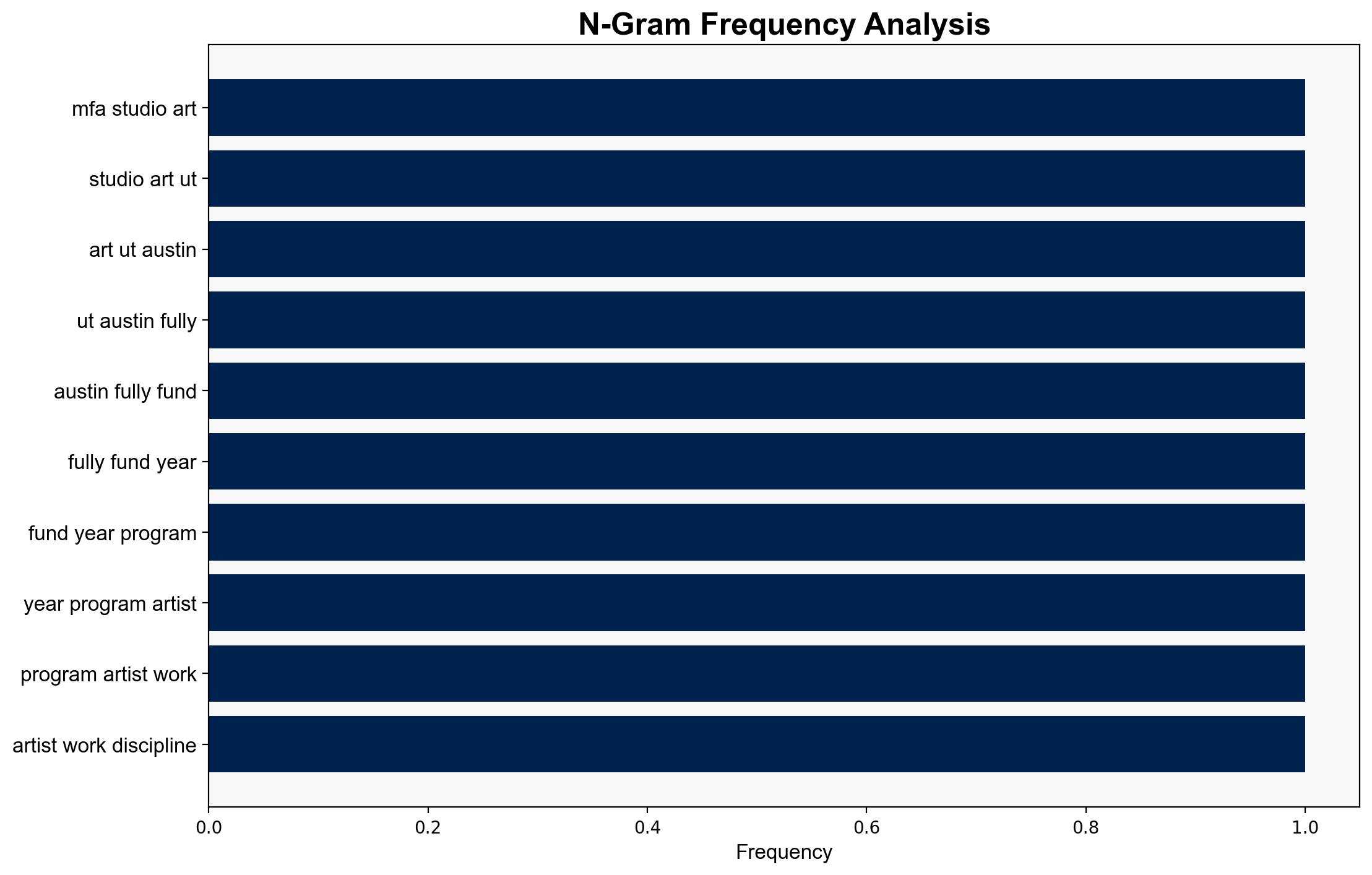The University of Texas at Austins Studio Art MFA Opens Applications for Fall 2026 – Hyperallergic
Published on: 2025-10-15
Intelligence Report: The University of Texas at Austin’s Studio Art MFA Opens Applications for Fall 2026 – Hyperallergic
1. BLUF (Bottom Line Up Front)
The University of Texas at Austin’s Studio Art MFA program is strategically positioned to attract high-caliber applicants due to its comprehensive funding and resources. The most supported hypothesis is that the program will enhance its reputation and influence in the art education sector. Confidence level: High. Recommended action: Monitor the program’s applicant pool diversity and post-graduation success to assess its long-term impact on the art community.
2. Competing Hypotheses
1. **Hypothesis A**: The fully funded MFA program will significantly increase the quality and diversity of applicants, enhancing the university’s reputation in the art education sector.
2. **Hypothesis B**: Despite the program’s offerings, external economic factors and competition from other institutions may limit its ability to attract top-tier talent.
Using ACH 2.0, Hypothesis A is better supported due to the program’s comprehensive funding, resources, and faculty engagement, which are attractive to prospective students. Hypothesis B is less supported as the program’s unique offerings provide a competitive edge over other institutions.
3. Key Assumptions and Red Flags
– **Assumptions**: The program’s funding and resources will remain stable; applicants value financial support and faculty engagement highly.
– **Red Flags**: Economic downturns could impact funding; potential over-reliance on faculty reputation without considering emerging art trends.
– **Blind Spots**: Lack of data on how similar programs have fared in recent years; potential for unforeseen shifts in art education demand.
4. Implications and Strategic Risks
The program’s success could set a precedent for other institutions, potentially leading to increased competition in offering similar benefits. Economic fluctuations pose a risk to sustained funding. A failure to adapt to new art trends could diminish the program’s appeal over time.
5. Recommendations and Outlook
- Monitor economic indicators that could affect program funding.
- Engage in regular curriculum reviews to incorporate emerging art trends.
- Scenario Projections:
- Best Case: The program attracts a diverse, high-quality applicant pool, enhancing its reputation and influence.
- Worst Case: Economic constraints reduce funding, limiting the program’s attractiveness and competitiveness.
- Most Likely: The program maintains a steady influx of quality applicants, with minor adjustments needed to stay competitive.
6. Key Individuals and Entities
No specific individuals are mentioned in the source text. The University of Texas at Austin is the primary entity involved.
7. Thematic Tags
education strategy, art education, program funding, university competition




